The Ultimate Guide to Coffee Brewing Methods
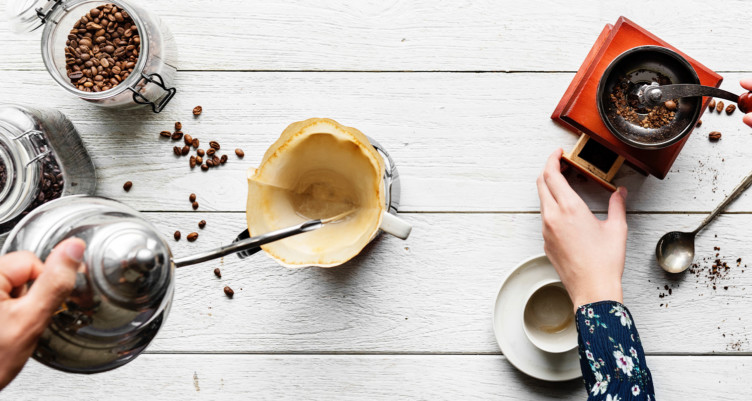
- Not all coffee brewing methods are the same – but they can all yield the best cup of coffee you’ve ever made, with a few simple steps.
- Learn everything you need to know about different coffee brewing methods, how to grind your own beans for each method and why high-quality coffee beans matter.
- From cold brew and AeroPress to pour-over and instant, get a comprehensive coffee brewing methods comparison to find the right one(s) for you.
- Since coffee is mostly water, the quality matters – learn how to ensure yours always tastes great).
Two out of every three Americans drink coffee daily, with consumption at a 20-year peak, according to the National Coffee Association.[1] Coffee is more popular than any other beverage – including tap water – and 84% of daily coffee drinkers prepare theirs at home.
In addition to saving money, making your own coffee instead of buying it can allow you to control the quality and ingredients. Coffee brewing methods can be as simple as using a drip machine or single-serve coffee pod, or they can be intricate, as with a Chemex or other pour-over method.
There’s no single best way to make coffee, since this drink is as personal as it is popular. That’s why we’re sharing this coffee brewing methods comparison, so you can find the method that’s right for you. Brewing the best coffee at home can be simple and convenient – and you don’t need to have any professional barista experience.
A good cup of coffee requires two ingredients: water and coffee beans. But it also requires the right tools – and the right grind. The most expensive coffee beans weighed to the exact gram will make a bitter or bland cup of coffee if the grind is too coarse or fine, for example. Keep reading to get a comparison of coffee brewing methods, with information on ideal coffee grind size, timing and equipment needed for each. Plus, we’re sharing tips on choosing a coffee grinder and four surprising things to consider about coffee before you shop.
An overview of coffee brewing methods
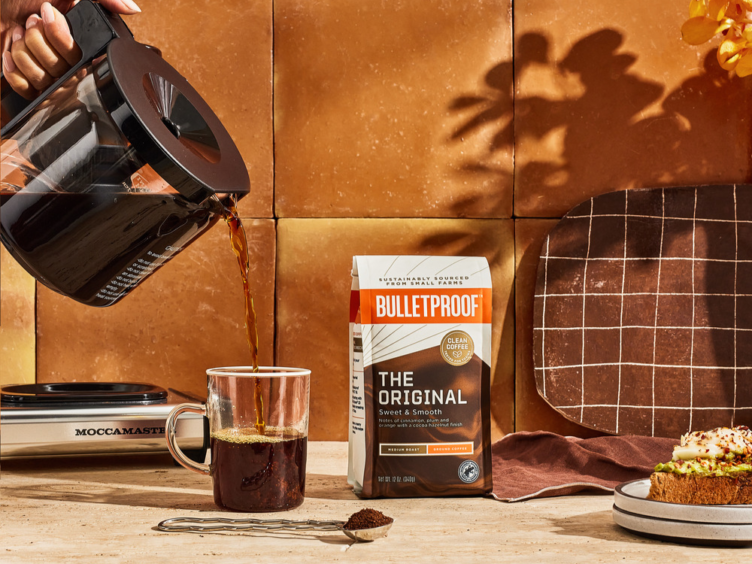
Whether you prefer to drink coffee made with a drip machine, an AeroPress or a Chemex, the best cup is a matter of preference. Coffee brewing methods vary in terms of time, equipment and convenience. Each coffee brewing method can yield a different taste and aroma – even if they use the same exact beans – and it can also impact the amount of caffeine and beneficial compounds in each cup.[2]
Some use fresh-ground beans, water boiled to a precise temperature and gravity (and take longer to prepare), while others involve little more than pressing a button and waiting a few seconds.
When choosing a coffee brew method and coffee maker, consider your morning routine and the flavor profile of your ideal cup of coffee. Experiment with a few methods to see what you like based on your personal preferences and your tastes.
Here is a coffee brewing methods comparison to help you find the best one(s) for you.
How to Make Coffee with an AeroPress
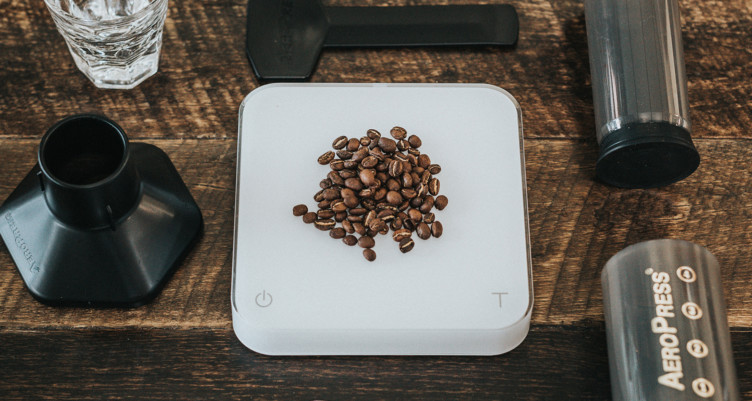
An AeroPress is similar to the more common, larger French press. However, the AeroPress is made of BPA-free plastic and is more compact, making it easier for travel or camping. It also uses a separate filter and finer grounds than a French press. The name refers to the airtight canister, which holds a cushion of air that pushes the hot water through the grounds and the paper filter. (You can opt for metal filters instead of paper to minimize waste.)
The coffee starts to transfer from the press to your mug before the plunger touches the liquid because the air does all the initial work. The AeroPress uses a small amount of coffee, and the medium-fine grounds contribute to the seal on the bottom that creates the pressure needed for extraction. Depending on the water-to-coffee ratio, the AeroPress can make standard coffee, cold brew or espresso-style coffee.
How to brew:
- Start with medium-fine coffee grounds and boiling water. Pull the plunger from the chamber to separate the two. Place a filter in the cap (rinse with water if desired). Twist the cap onto the chamber, then place over a sturdy mug.
- Add the coffee grounds and shake gently to level them.
- Add boiling water slowly to fill the chamber, then stir for 10 seconds.
- Insert the plunger about a ½ inch, let rest 30 seconds, then use gentle pressure to press the plunger all the way in.
Equipment needed:
AeroPress and filter (metal or paper), food scale, mug(s) and boiling water.
Grind:
Medium-fine (the size of table salt)
Ratio:
14 grams of coffee to 1 cup water
Brew:
1-1.5 minutes
How To Make Cold Brew
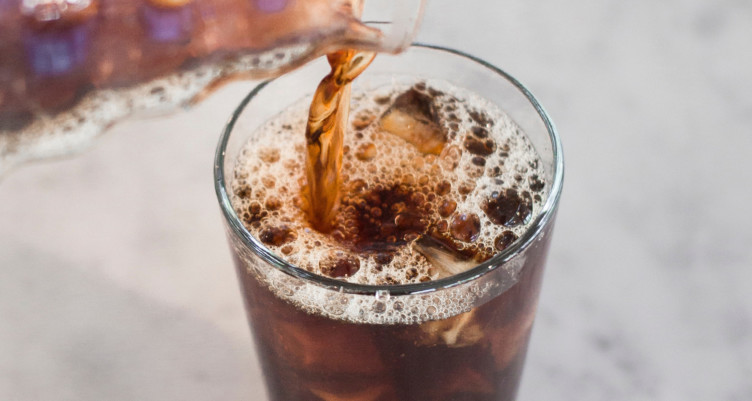
Cold brew is a passive coffee brewing method. Since this is a slow extraction method, you want a large, coarse grind. The low temperature results in slower coffee extraction, which results in a smoother cup of iced black coffee that’s lower in acidity than coffee brewed with hot water.[3] Cold brew isn’t the ideal method if you want coffee immediately, but it is a good choice for anyone who wants to batch-brew coffee, as it can last up to five days in the refrigerator.
Filtering your finished cold brew can be a little messy, but choosing a single-use, compostable filter can make the process easier.
How to brew:
- Simply scoop coffee grounds into a cup, jar or pitcher, add water to the top and refrigerate for about 12 hours.
- Filter before serving or storing.
Equipment needed:
Cup, jar, or pitcher, preferably with a lid; coffee and filtered cold or room-temperature water; cheesecloth or filter.
Grind:
Extra-coarse (the size of rock salt or cracked pepper)
Ratio:
1 cup ground coffee to 8 cups cold or room-temperature water
Brew:
Overnight (up to 12 hours)
How to Make Drip Machine Coffee
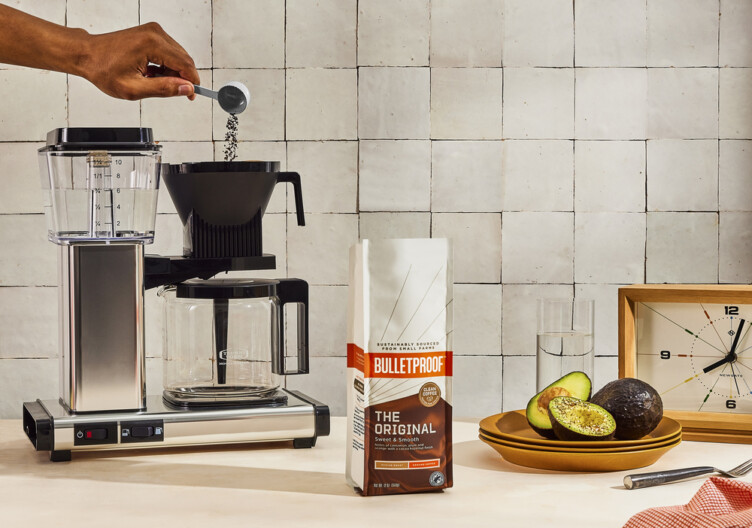
Drip coffee machines are another simple way to make coffee. This method is ideal for those who don’t want to invest a lot of time or money in their coffee set-up. Affordable and accessible, these are the machines most people think of for making coffee. Some models let you program them to make coffee at a certain time or have built-in grinders. Drip coffee doesn’t require specific weights and instead can be measured in tablespoons and cups.
Drip coffee makers work quickly, so the grounds and water are only briefly in contact. If the grounds are too coarse, they won’t have enough surface area for full extraction. Too fine, and the water will stay in contact with the grounds too long, resulting in bitter coffee.
While these machines are convenient, they are not able to extract as much nuanced flavor as methods like a French press or pour-over method. However, some higher-end models combine the ease of drip coffee with the flavor of pour-overs.
Paper filters can affect the flavor of your final brew. Opt for unbleached or, even better, reusable cloth or stainless steel mesh filters for the best-tasting coffee.
How to brew:
- Place a filter in the basket, add the coffee, pour water into the machine, then press a button and let the machine do the work.
Equipment needed:
Machine, water and ground coffee
Grind:
Medium (finer than table salt but not powder)
Ratio:
1 to 2 tablespoons of coffee per 6 ounces of water
Brew:
Time varies, automatic after setup
How to Make Coffee in a French Press
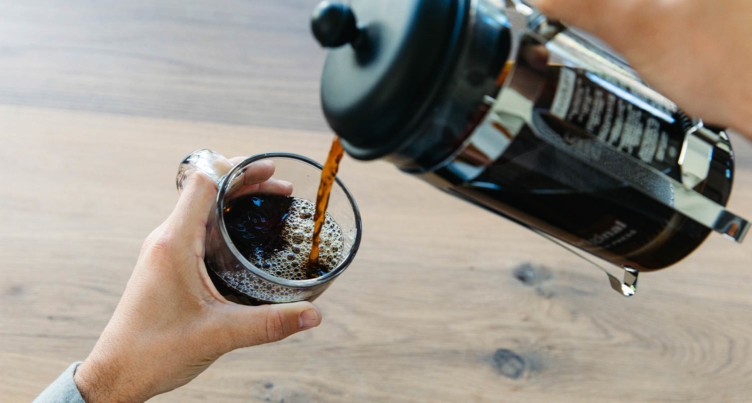
The French press is a glass or stainless steel carafe with a plunger that contains a built-in stainless steel mesh filter. This allows the coffee’s natural oils to pass through unfiltered, which improves flavor. (While further research is needed, one study that examined the cardiovascular surveys of a half-million Norwegians found that unfiltered coffee methods like the French press were associated with higher mortality, compared with filtered brewing methods.)[4]
The French press brew method is good if you want to avoid plastic, because most models use metal and glass components. It’s also mostly hands-off aside from the final plunge, yet yields a full-bodied cup of coffee. Below, you’ll find our recommendations for how to make the best coffee in a French press.
How to brew:
- Place grounds into the pitcher, pour boiling water to the top, stir gently and place the sieve disc and lid on top with the plunger all the way up.
- Let it brew for about four minutes, then press the plunger down to separate the water from the grounds.
- Serve, using the French press as the carafe.
Equipment needed:
French press, food scale, boiling water
Grind:
Medium-coarse (the size of sand)
Ratio:
36 grams coffee to 660 ml water (using a standard 3-cup French press)
Brew:
4 minutes
How to Make Pour-Over Coffee
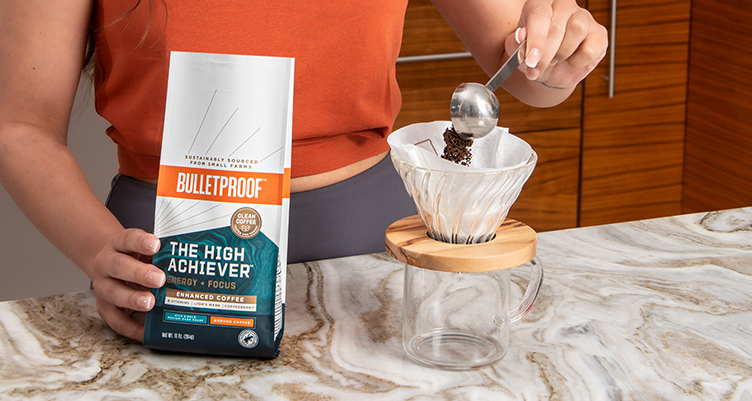
Pour-over coffees are, as the name suggests, made by slowly pouring boiling water over coffee grounds, allowing the water to slowly drip into the mug or carafe below. You may have noticed baristas meticulously making pour overs at your local coffee shop.
Pour-over methods require precise weights of coffee and water. You get more control with a pour over, from the temperature of the water to the rate at which the water drips through the filter. And unlike drip machines, pour overs are usually glass or ceramic – though some are plastic.
The pour-over method requires a longer brew time and more attention, but it yields a complex, smooth and flavorful cup of coffee. Opt for a cone-shaped metal coffee filter instead of a paper one to prevent waste. If you use paper, rinse it with hot water first to get rid of unwanted flavors.
Sometimes pour-overs are called Harios, after a popular brand of pour-over drippers.
How to brew:
- Start by grinding and weighing your beans and weighing your water. For single-serving pour-overs, set them over a mug.
- Add your freshly ground coffee to the filter cone, then pour a small amount of freshly boiled water over the grounds to moisten them.
- Wait 30 seconds to allow them to “bloom.” Then, slowly pour the remaining water over the grounds at an even level, in a circular motion. Go slow enough that you don’t cause the grounds to overflow.
- Once the water filters through, discard the filter and enjoy.
Equipment needed:
Scale, mug, pour-over cone, filter, kettle (preferably with a narrow or “goose” neck spout).
Grind:
Medium-fine (similar to table salt)
Ratio:
22 grams of coffee to 400 grams of water (pour-overs use very specific weights for both water and coffee; feel free to experiment and find the exact ratio that works for you)
Brew:
4-5 minute wait after you pour the water over the grounds
How to Make Chemex Coffee
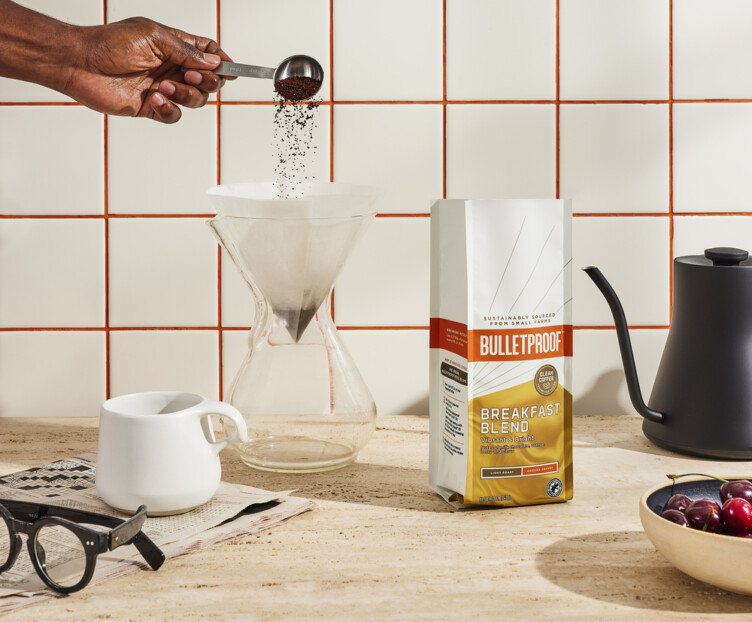
A Chemex is a specific type of pour-over that uses a glass carafe, allowing you to brew more coffee than other methods. These are aesthetically pleasing and do not require a separate carafe.
How to brew:
- Place a cloth or paper filter in the Chemex brewer, dampen it with warm water to preheat the brewer, then discard the water.
- Then follow the instructions above for pour-over coffee.
Equipment needed:
Scale, Chemex, filter, kettle (preferably with a narrow or “goose” neck spout).
Grind:
Medium-fine (similar to table salt)
Ratio:
1 rounded tablespoon coffee to 5 ounces of water (or use your ideal pour-over ratio)
Brew:
4-5 minute wait after you pour the water over the grounds
How to Make Percolator Coffee
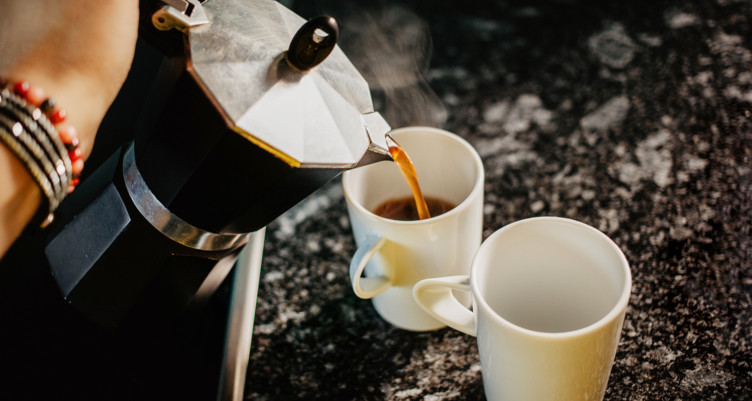
A percolator is a stovetop coffee method that uses a small metal pot, with no paper and no waste. You have to keep an eye on your percolator when it’s brewing. It brews at boiling temperatures, which can extract bitter flavors from the coffee and potentially boil over. It might take a few rounds to figure out the best time to remove your percolator from heat, but it brews a strong cup of coffee that drinks like an espresso.
Some benefits to this method are that it can be used on the stovetop, brews strong coffee and doesn’t require precise measurements. This type of coffee maker is popular in Italy.
How to brew:
- To brew coffee in a percolator (or moka pot), pour water into the bottom chamber and fill the funnel with fine coffee grounds.
- Tightly screw on the top, then place the machine on a burner and bring it to a boil.
- As the water pressure builds in the bottom compartment, coffee slowly brews into the pot.
- Remove from heat when the stream of coffee slows to a trickle.
Equipment needed:
Percolator, pre-ground coffee, and water.
Grind:
Fine (the size of granulated sugar)
Ratio:
Full funnel of coffee and full chamber of water
Brew:
Varies depending on the size of your percolator
How to Make Single Serve Coffee Pods
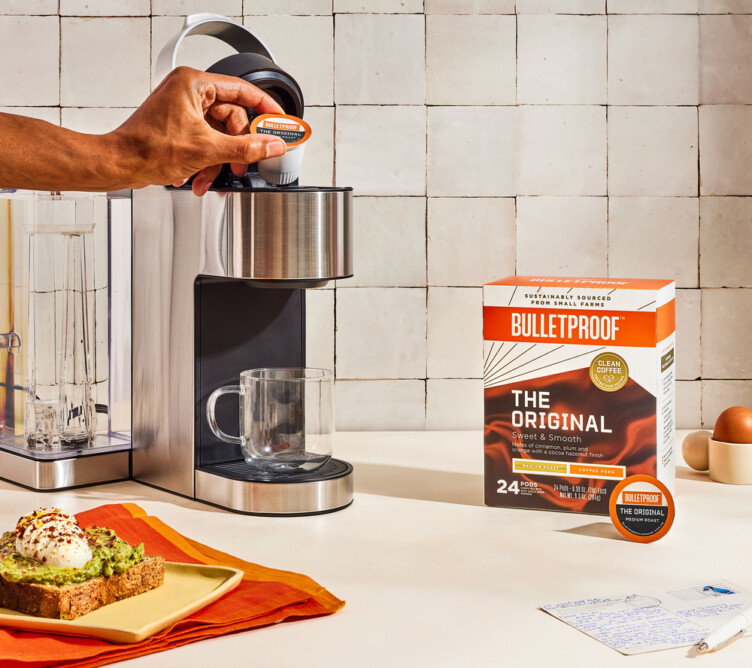
These machines are convenient and easy to use. Simple fill the water tank, place a pod in the machine and a cup underneath, then press a button and wait a few seconds. These machines brew a fine cup of coffee very quickly, but the extraction is not as precise as some other methods.
However, if you are looking for an easy method, the single-serve coffee pods are convenient and easy. Try our Keto Coffee Pods for a one-step solution to get your keto coffee ready in one step.
The pods do create more waste, but the contents can be composted and the cup can be recycled. If you prefer to use your own coffee, you can also find refillable pods.
Equipment needed:
Coffee pods, machine, and water.
Grind:
n/a
Ratio:
Determined by the machine
Brew:
Determined by the machine
How to Make Instant Coffee
Instant coffee has made advancements in flavor and consistency, thanks to modern coffee science. Even high-end and boutique coffee roasters offer instant coffee packets made by freeze-drying their brew. The coffee can be made using hot or cold water, and instant coffee is lightweight and easy to transport. If you don’t have access to a kitchen or need to make coffee on the go, instant coffee is a good option.
And instant coffee delivers higher levels of beneficial compounds like antioxidants and phenols, according to a 2012 study.
How to brew:
- Simply add hot or cold water to a mug along with one serving of instant coffee and stir.
- Follow the instructions on the package for precise measurements.
Equipment needed:
Instant coffee, hot or cold water and a cup or mug.
Grind:
n/a
Ratio:
Depends on the product
Brew:
Refer to product description
How to Make Coffee Without a Coffee Maker
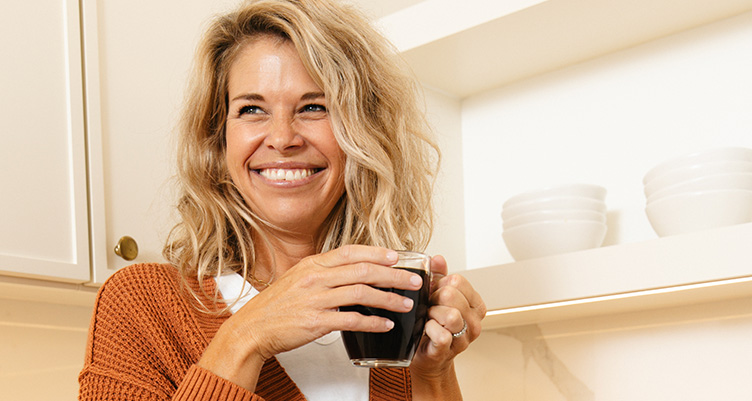
What if you have coffee and water but no equipment? Can you make coffee without a coffee maker? Yes – and certain countries like Turkey and Greece have traditionally made coffee in this way. This is a basic method using a saucepan.
How to brew:
- Combine finely ground coffee and water, bring to a boil and stir.
- Simmer for a couple of minutes, then carefully pour into cups.
- You can use a filter if you have one or allow the grounds to settle.
Equipment needed:
Coffee, water and a saucepot
Grind:
Extra fine (the size of flour)
Ratio:
2 tablespoons coffee to 1 ½ cups water
Brew:
4-5 minutes
What difference does coffee grind make?
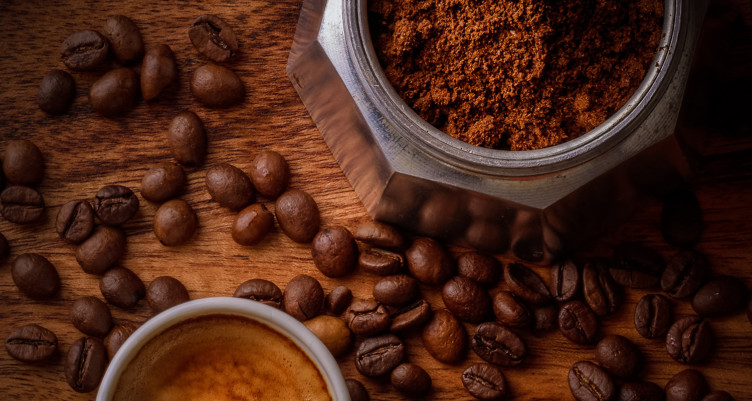
Coffee is simple: You need water and coffee beans. However, each method requires a specific grind size for optimal extraction. In general, methods that are faster and more pressurized – like percolators and espresso machines – use finer grounds since the water and coffee are in contact for a short time. Slower methods, like a French press, use coarser grounds, while cold brew uses extra-coarse, large grounds.
Buying coffee that’s pre-ground is convenient, but allows less control over grind (it is usually a medium grind) and despite often being vacuum sealed, is not as fresh as whole bean coffee. Whole coffee beans stay fresher longer, and they retain their flavor and aroma longer than ground coffee beans, which have been exposed to more air. If you don’t have a coffee grinder at home, many supermarkets have one.
How you grind your coffee beans can also make or break your cup. The key to an amazing cup of coffee is using just enough water to extract the delicate, delicious coffee compounds. If you under-extract your coffee, you don’t get the bean’s full flavor profile. If you wait too long or over extract it, you might extract bitter compounds.
This list shows you the ideal size grind for common coffee brewing methods, from the finest to the coarsest.
- Turkish, Arabic and Greek coffee: Finest grind possible.
- Espresso machine: Fine grind.
- Percolator (moka pot): Fine grind.
- AeroPress: Medium-fine grind.
- Pour over: Medium-fine grind.
- Drip coffee maker: Medium grind.
- French press: Medium-coarse grind.
- Cold brew: Coarse grind.
How to choose a coffee grinder
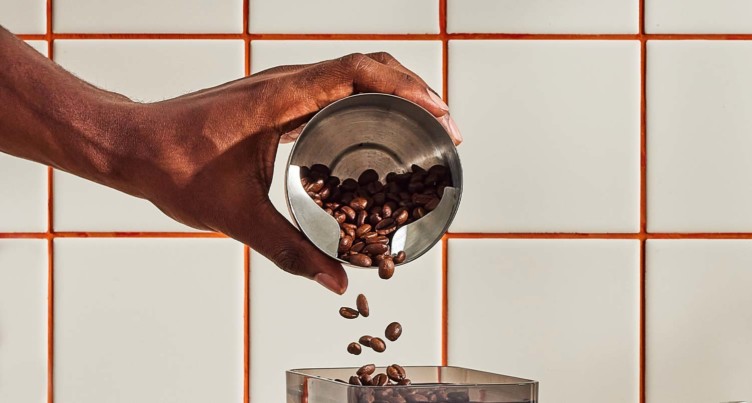
There are two main types of coffee grinders: blade grinders and burr grinders. Blade grinders are more affordable, but burr grinders yield a more universal grind. Here’s a comparison, along with some tips.
Blade grinder vs. burr grinder
Blade grinders use fast-spinning blades to chop the beans, which can generate heat and extract oils before you start brewing your coffee. (That’s why burr grinders are superior to blade grinders.) If you use a blade grinder, pulse the coffee beans in short bursts, shaking the grinder up and down in between. Pause often to check the size of your grind.
Burr grinders rotate and crush beans, resulting in an even grind. To maximize consistency, your burr grinder should be cone-shaped, not flat and round. A cone shape allows the beans to pass through the blades multiple times, which gives your final grind a more consistent texture. Burr grinders also have a numerical scale for a precise grind each time. Refer to your user’s manual to determine what number range corresponds to fine, medium and coarse.
4 surprising things to consider about coffee
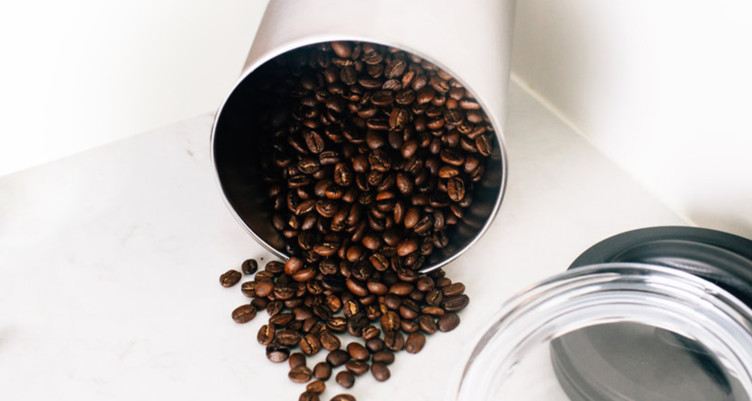
1. Storage
Storing your coffee in the wrong way can impact the flavor, making it taste stale, bitter or moldy. Avoid storing beans in the freezer, as coffee beans will absorb any moisture, odors and flavors to which it is exposed. If you must freeze your coffee, choose an air-tight container and remove only as much as you’ll use in a week or so. [5]
2. Water quality
Your final cup of coffee is mostly water, so start with the best quality for the best flavor. Use a water filter to remove any off-putting aromas or flavors. The Specialty Coffee Association, a coffee trade group, recommends using water with certain pH, calcium hardness and sodium levels – and no odors, colors or chlorine.
Getting a high-quality water filter for your house is a good idea for more than your coffee. Human bodies are mostly water, after all, so choose the cleanest water source possible for your health and overall well-being.
3. Water temperature
According to the National Coffee Association, the ideal coffee brewing temperature range is between 195°F and 205°F. (Water boils at 212°F.)[6] Below 195°F, water does not extract every beneficial and flavorful compound from the grounds. Above 205°F, some of the benefits start to break down and more bitter compounds are extracted.
Most automatic brewing machines only reach about 175°F. That’s why coffee aficionados prefer manual methods like the pour over — you get to determine the water temperature before it ever touches the coffee grounds.
To get the water at the perfect temperature for brewing, boil your water, then let it sit for about 30 seconds to one minute, which should bring it down from boiling to about 195°F to 200°F. You can also buy a kettle with a built-in thermometer and scale for precision.
4. Mold
Mold can impact coffee’s flavor – and how it makes you feel. However, there are several steps coffee producers can take to prevent mold. Choose the right beans to avoid exposure to molds:
Choose coffee processed using wet methods, which effectively eliminate most molds and mycotoxins (compared with dry processing methods).[7] Choose coffee that has been thoroughly dried in the sun using mechanical dryers, which reduces the risk of mold growth. After roasting, coffee should be tested for toxins to ensure the beans are clean.
Bulletproof Coffee Beans are independently tested for toxins. That way, you know you’re getting the cleanest cup of coffee possible.
Ready to get brewing? Find out how to choose coffee beans that taste delicious, even when you’re shopping for coffee online.
Sign up for early access to sales, product launches, the latest Bulletproof news and more!
This article was originally published on April 8, 2020 and has been updated with new content.



